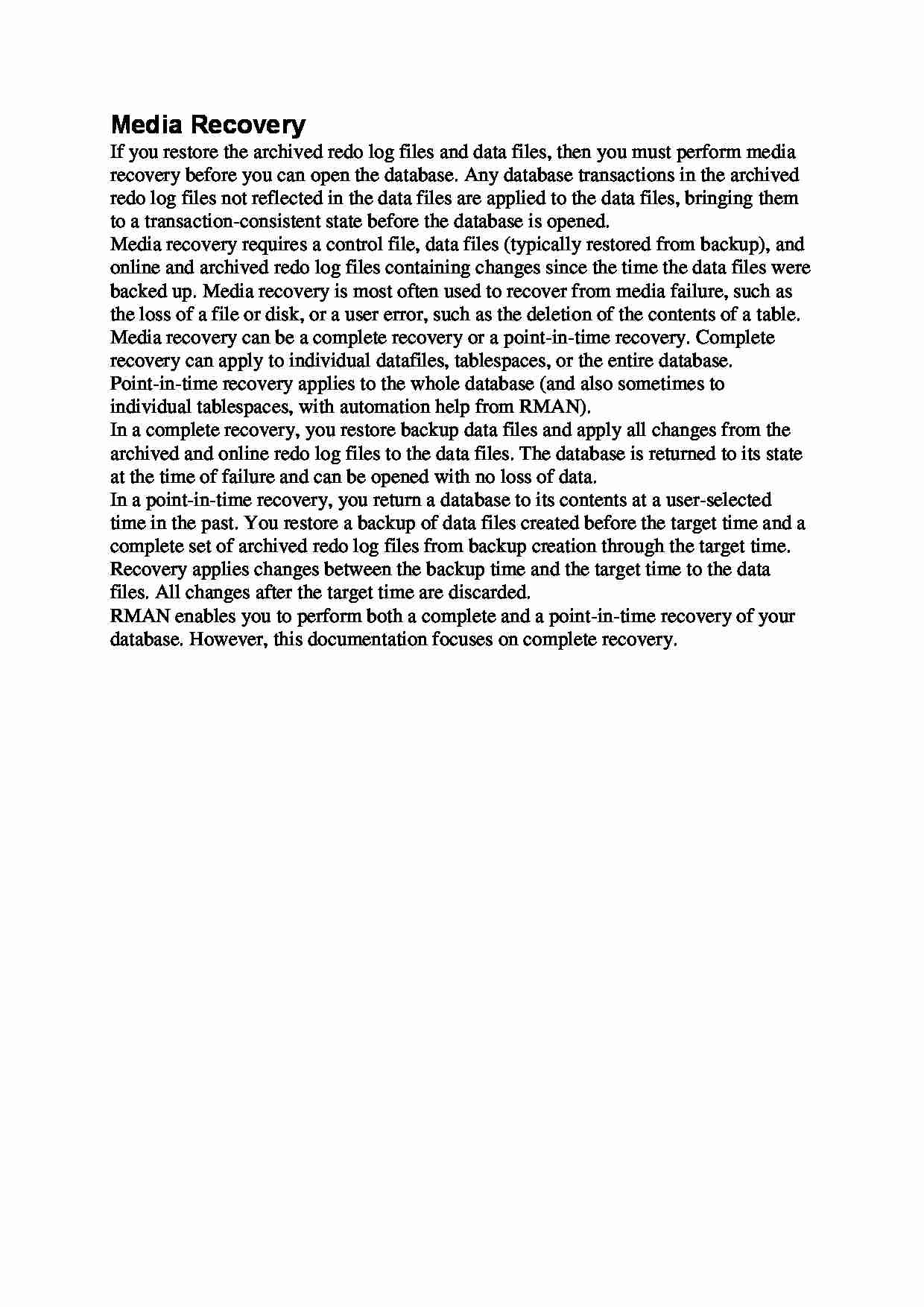
Media Recovery
If you restore the archived redo log files and data files, then you must perform media
recovery before you can open the database. Any database transactions in the archived
redo log files not reflected in the data files are applied to the data files, bringing them
to a transaction-consistent state before the database is opened.
Media recovery requires a control file, data files (typically restored from backup), and
online and archived redo log files containing changes since the time the data files were
backed up. Media recovery is most often used to recover from media failure, such as
the loss of a file or disk, or a user error, such as the deletion of the contents of a table.
Media recovery can be a complete recovery or a point-in-time recovery. Complete
recovery can apply to individual datafiles, tablespaces, or the entire database.
Point-in-time recovery applies to the whole database (and also sometimes to
individual tablespaces, with automation help from RMAN).
In a complete recovery, you restore backup data files and apply all changes from the
archived and online redo log files to the data files. The database is returned to its state
at the time of failure and can be opened with no loss of data.
In a point-in-time recovery, you return a database to its contents at a user-selected
time in the past. You restore a backup of data files created before the target time and a
complete set of archived redo log files from backup creation through the target time.
Recovery applies changes between the backup time and the target time to the data
files. All changes after the target time are discarded.
RMAN enables you to perform both a complete and a point-in-time recovery of your
database. However, this documentation focuses on complete recovery.
... zobacz całą notatkę



Komentarze użytkowników (0)